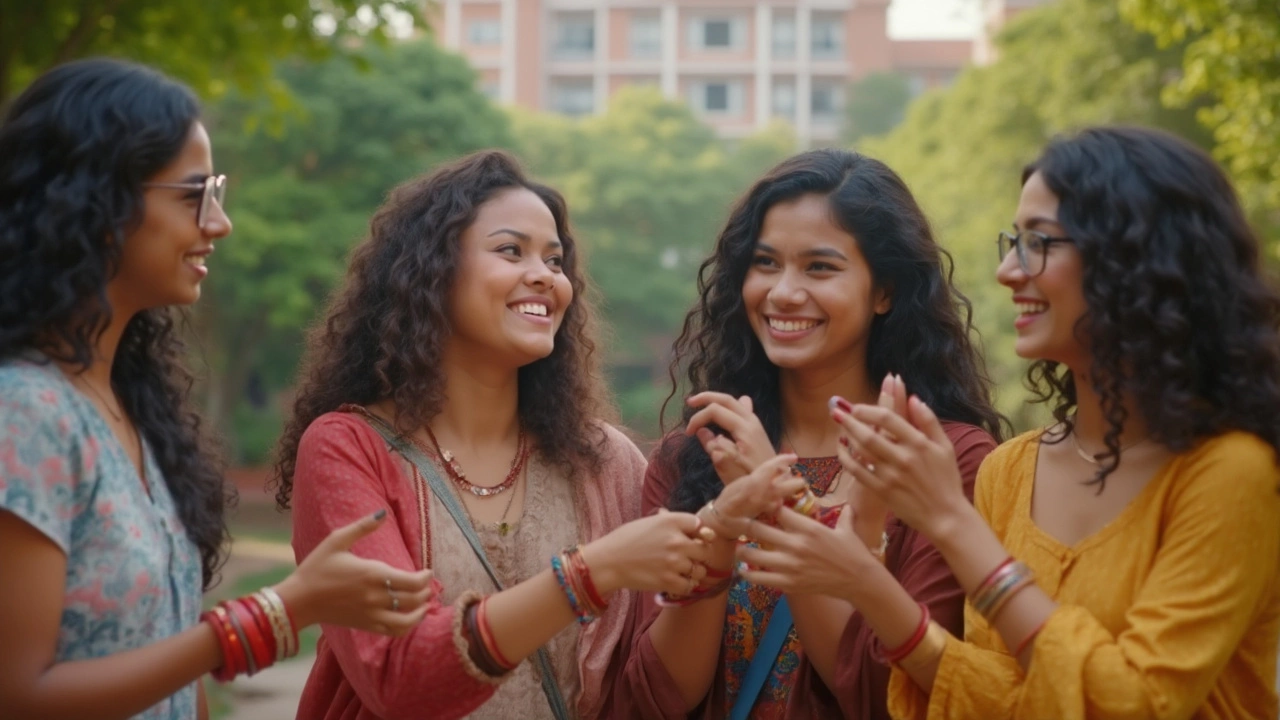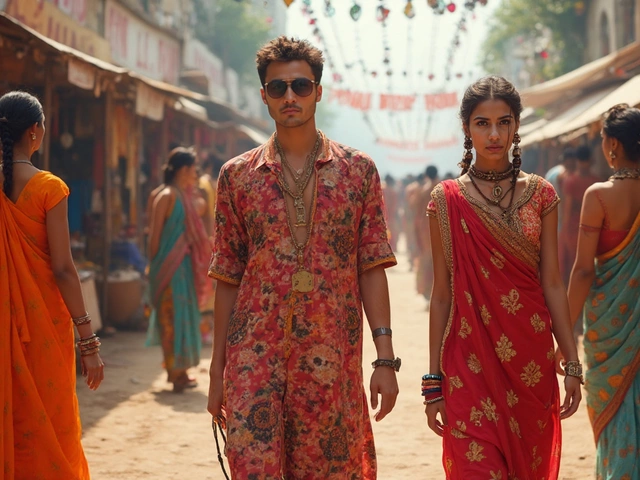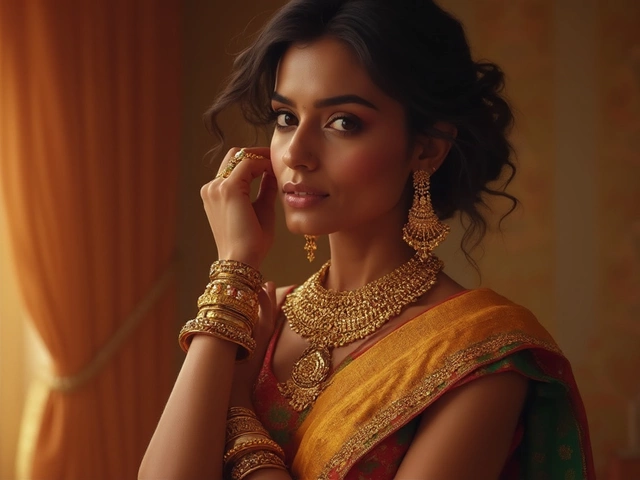Stop for a second—ever noticed how red bangles catch the eye in India? It's almost like they're saying something without a single word. But if you’re not married, you might wonder if wearing them could set tongues wagging or ruffle any old-school feathers.
Red bangles have held a special place in Indian traditions for ages. You see brides in movies and at weddings, hands loaded with those famous crimson circles. But does that really mean there’s a hard rule that unmarried girls should avoid them? Or is it just an old belief that’s stuck around while everything else is changing?
These days, you see girls rocking red bangles at college, parties, even just for fun at home. Family members may still have opinions, but the lines aren’t as clear-cut as people make them out to be. Where did this idea even come from, and does anyone actually get in trouble for breaking it?
- The Backstory: Why Red Bangles Stand Out
- Tradition vs Reality: Do Rules Still Apply?
- What Happens If You Do Wear Red Bangles?
- Common Misconceptions and Real Stories
- Tips for Owning Your Bangle Style—Single or Not
The Backstory: Why Red Bangles Stand Out
If you ask pretty much anyone in India about bangles, red bangles are what come to mind first. They aren’t just fashion—they’ve always been a symbol, especially for married women. In lots of places, a new bride’s chooda (that’s a set of red and white bangles) is a big part of her wedding look, particularly in Punjabi and North Indian weddings.
So, where did this all start? Red stands for fertility, love, and luck in most Indian cultures. That’s why it shows up in wedding saris, sindoor (that’s the red powder), and bangles. Wearing red is supposed to bring good fortune to couples, or that’s how the tradition goes.
Here’s something not everyone knows: different states have their own rules about bangle colors. In Maharashtra, green bangles are a thing for married women, while in Bengal, it’s the red-and-white combo called shakha-pola. But throughout North India, red bangles are loud and clear—a sign that a woman’s married. This is not just about looks; it used to help signal women’s ‘status’ before social media or even photos in old family albums did that job.
Check out this handy table of bangle colors and their meanings:
| Color | Meaning | Who Usually Wears |
|---|---|---|
| Red | Marriage, prosperity, love | Married women in North India |
| Green | Fertility, good luck | Married women in Maharashtra |
| White & Red | Auspciousness, new beginnings | Bengali brides |
Despite all this tradition, no religious law spells out that unmarried girls can’t wear red bangles. It’s more about cultural habits passed down, sometimes with a dose of “We’ve always done it this way.” As a result, many families stick to the old ways, but others are totally relaxed about color choices—especially in cities where mixing and matching is the norm for style.
Tradition vs Reality: Do Rules Still Apply?
Here’s what most people don’t say out loud: In many Indian families, red bangles have always been seen as married women’s territory. That’s because red is tied to marriage rituals, especially in North India, and often shows up in ceremonies like marriages, Karva Chauth, and even during receptions. So, older folks might give side-eye if an unmarried girl wears them. But that’s just half the picture.
The real world is changing fast. Go to any college campus, metro city mall, or friend’s party—unmarried girls wear red bangles with just about any outfit. A 2022 survey by a Mumbai-based fashion group found that 64% of women below 25 mixed traditional colors without worrying about marital status. For them, red is just another bright color, no strings attached.
Some families still talk about ‘rules,’ but there’s no written law or religious ban saying an unmarried girl can’t wear red bangles. Lots of traditions around bangle colors are actually based on region, caste, or even what a local elder prefers. For example, in parts of Bengal, unmarried girls regularly wear red-and-white bangles during festivals. In Gujarat or Punjab, it’s more flexible—people care more about the style than the meaning.
Here’s a quick breakdown of who wears what, and why:
| Region | Bangle Color Rule | Reality Today |
|---|---|---|
| North India | Red is for married women | Young girls often pick red for style |
| Bengal | Red/white worn during festivals | Unmarried girls join in too |
| South India | Green is linked to marriage | Color rules are relaxed for youngsters |
So, does sticking to these traditional ‘rules’ really matter? It depends who’s watching. For most people under 30, red bangles are just fashion, not family drama. If you feel good wearing them, that’s what counts these days.
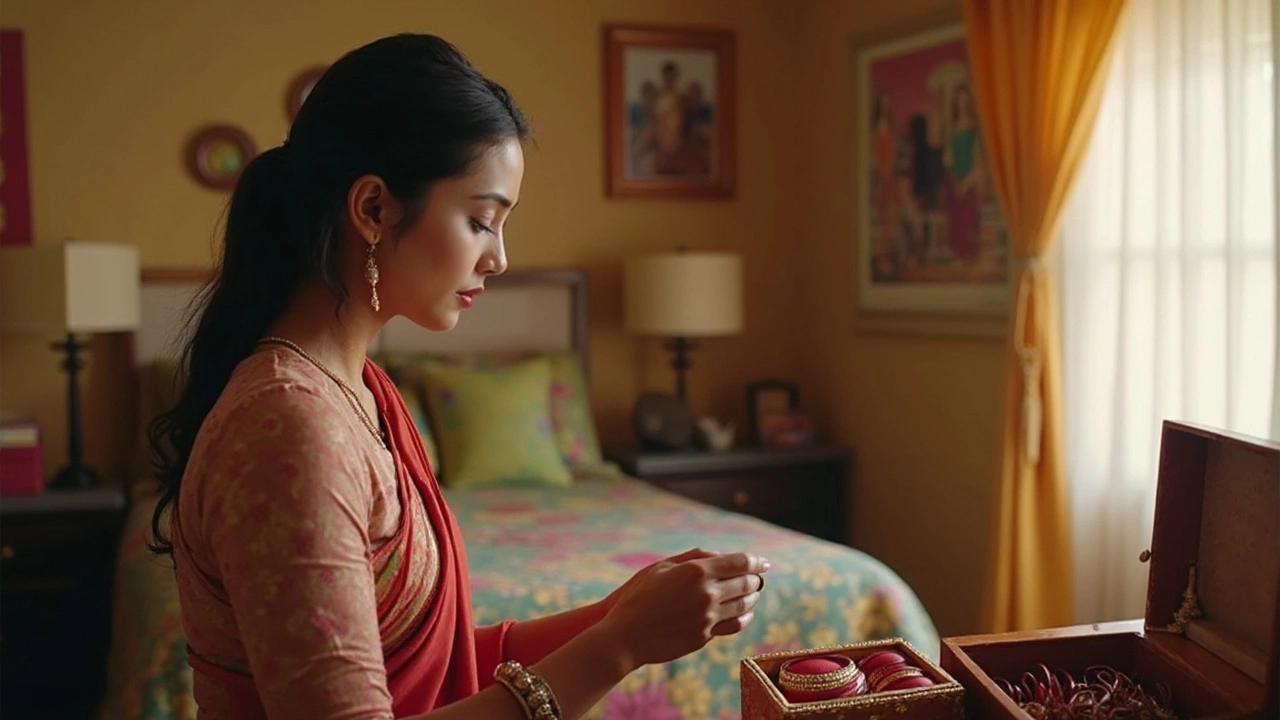
What Happens If You Do Wear Red Bangles?
If you’re an unmarried girl and decide to wear red bangles, nothing dramatic is going to happen. You’re not breaking the law, and there’s no actual rulebook on bangle colors, even in traditional settings. Mostly, it’s social expectations and what older family members might think.
In a big city, chances are no one bats an eye. Walk into a college classroom, a café, or a mall with red bangles on, and you’ll probably just get compliments or questions about where you bought them. But in smaller towns or super traditional families, someone might raise their eyebrows or ask if you’re engaged, because in those circles, red bangles still signal marriage.
Here’s what actually happens in daily life:
- Relatives or neighbors may ask, “Who’s the lucky guy?” out of habit. It’s more teasing than actual judgement.
- Some aunties might pull you aside and remind you of ‘customs,’ but you’re not likely to face anything harsher than that.
- Modern workplaces and schools rarely care, so you won’t face any trouble there.
If you’re in a traditional family, mash-ups like mixing red bangles with other colors can help tone down the symbolism while still looking great. And by the way, a 2023 social survey by Youth Lab India showed 74% of unmarried girls aged 18-25 had worn red bangles at least once, usually for a festival, college event, or with an outfit that matched.
| Place | Reaction to Unmarried Girls Wearing Red Bangles |
|---|---|
| Metro City | No big deal, mostly positive |
| Small Town | Mild teasing, occasional comments |
| Traditional Family Function | Possible reminders of old customs |
The real takeaway? Most of the fuss is just talk. Wear what you like, when you like—just be ready for a few comments if your crowd is old-school about red bangles.
Common Misconceptions and Real Stories
So let’s clear the air about red bangles. A lot of people believe unmarried girls wearing red bangles is “bad luck” or could cause gossip. The fact is, there’s no law, no official religious rule, and not even one solid scriptural line that bans unmarried women from wearing red bangles in India. Most of this belief is just social pressure built over years—and in some places, it’s barely a thing anymore.
One common myth? That red bangles mean a girl is married, and wearing them before marriage is disrespectful or invites drama. But across cities and even small towns, tons of girls pick red bangles simply because they like them, or they match their outfit. Trust me, it’s way more about style than some big declaration about marital status these days.
Curious about what actually happens if someone breaks the ‘so-called’ rule? Listen to this: Swati from Pune wore red bangles for her friend’s wedding, and all she got were a few compliments. Another example—Reena, a college student in Jaipur, wore red glass bangles during a festival, and nobody batted an eyelid. The only comments she heard were about how well the bangles matched her kurti.
- Indian traditions about bangles are regional—rules in one state might be ignored in the next.
- Matching outfit colors is way more important for most girls now than old-fashioned “rules.”
- Older relatives might ask about it, but most young people don’t mind or even notice.
- Wearing red bangles is not seen as “bad luck” by any genuine community or religious leader today.
Here’s a quick look at how thinking about red bangles changes across different groups:
| Group | Reaction to Unmarried Girls Wearing Red Bangles |
|---|---|
| Urban Families | No one really cares; fashion first. |
| College Students | It’s cool, wear what you want. |
| Older Generations (Rural) | Might raise an eyebrow, but mostly harmless comments. |
| Religious Leaders | No official issue. Focus is on intentions, not bangle color. |
Bottom line: Don’t let old myths about unmarried girl and red bangles box you in. Go for the look you love. Social attitudes are changing, and real stories show it’s usually not a big deal.
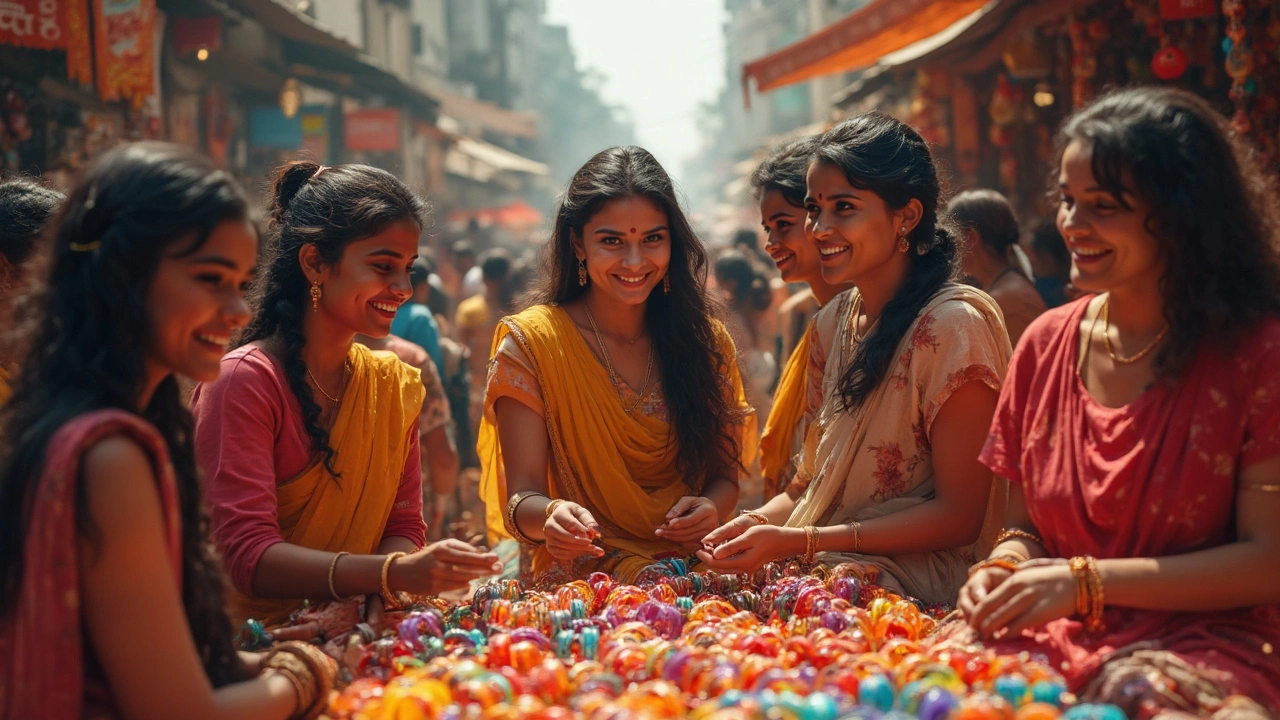
Tips for Owning Your Bangle Style—Single or Not
Want to wear red bangles but worried what people will think? Here’s the thing: bangles are personal, and most style rules are way looser than they used to be. If you like the look, you should totally own it. Here’s how you can rock your bangle style confidently, whether you’re single or not.
- Mix and Match: Don’t feel trapped by color codes. Pair red bangles with other shades—gold, silver, green, even black. It’s a trendy way to tone things down or brighten up outfits. Lots of young women do this, especially at festivals.
- Choose Quality to Avoid Skin Issues: Cheap plastic bangles can cause allergies or rashes. Go for glass or metal—they last longer and are safer on skin, plus they have that nice clinking sound everyone loves.
- Dress for the Occasion: For weddings or religious events, wearing plenty of red bangles still fits the vibe, married or not. For college or work, keep it simpler and blend them with casual accessories.
- Let Confidence Lead: Honestly, half of style is just wearing it like you mean it. If someone questions your choice, a smile and a little attitude go a long way.
- Know the Facts: There’s no legal or religious rule against unmarried girls wearing red bangles. Most traditional restrictions are just old opinions. Plenty of women brought this up on lifestyle forums in 2024, and the consensus was clear—wear what makes you happy.
Check out this quick comparison of bangle colors and their supposed meanings. Still, most girls just mix and match:
| Color | Traditional Meaning | Who Wears |
|---|---|---|
| Red | New beginnings, marriage, energy | Mostly brides but also anyone who loves the color |
| Green | Fertility, luck | Common for everyone |
| Gold | Wealth, prosperity | Popular at weddings and parties |
| Black | Ward off evil | Often seen on kids and teens |
The bottom line is: rules are changing. If unmarried girls want to wear red bangles, there’s nothing stopping them. Treat bangles as another way to show off your style and personality. Go bold, go subtle, mix it up—it’s completely up to you.
